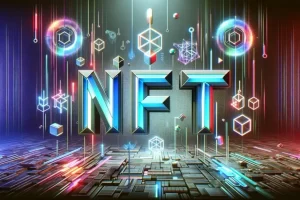Researchers leveraged AI to identify nearly 100,000 fake cryptocurrency giveaway scams on Twitter, highlighting the power of machine learning for combating fraud at scale.
AI Assistance for Hunting Down Twitter Crypto Scams
A team of computer scientists has published a new study showcasing the use of artificial intelligence to detect fraudulent cryptocurrency giveaway scams proliferating on Twitter.
By developing a deep learning algorithm trained to recognize patterns in scam tweets, the researchers identified over 95,000 examples of people of impersonating celebrities and major brands to lure victims.
The novel AI framework automates scam discovery at scale to mitigate losses. It also provides insights into fraudster tactics to inform protective countermeasures.
An Ongoing Danger for Crypto Newcomers
The researchers focused on “free giveaway” scams involving impersonators offering free crypto or NFTs in exchange for an upfront “gas fee.” This common tactic primarily targets newcomers unfamiliar with securely managing crypto assets.
Victims are tricked into sending cryptocurrency to the scammer’s wallet under the false pretense of receiving a larger payout in return, which never materializes. Millions have been defrauded through Twitter giveaways cons costing individuals hundreds or thousands.
Because such fraud relies heavily on social engineering rather than hacking, many underestimate the risks despite devastating financial losses.
Gathering a Dataset of Real-World Scam Tweets
To train the AI system, the researchers first compiled a dataset of scam tweets to analyze. This included 7 million Twitter posts containing crypto-related keywords, filtered to roughly 380,000 suspicious giveaway tweets.
These were manually labeled as scams or non-scam by workers on Amazon Mechanical Turk, creating a dataset of 12,000 scam examples. This real-world data formed the foundation for training the deep neural network model.
Per the paper:
“By tracking the transactions of the scam cryptocurrency addresses, this work uncovers that over 365 victims have been attacked by the scam, resulting in an estimated financial loss of 872K USD.”
Training a Scam-Spotting AI Agent
Leveraging the verified scam tweet dataset, the researchers fine-tuned a BERT-based neural network model optimized for natural language processing tasks.
The AI agent learned to identify subtle patterns in scam tweets like particular phrases, emojis, handles, and tweet structures that distinguished them from authentic posts.
Once sufficiently trained, the model could accurately classify never-before-seen scam tweets with over 97% precision based solely on text patterns.

Sniffing Out Thousands of Fraudulent Accounts
When deployed on the initial 380,000 tweet corpus, the AI model identified over 95,000 as scams across 15,000 unique accounts. Many accounts were engaged solely in scamming.
This demonstrates how AI can automate the discovery of new fraud campaigns and accounts at enormous scale to mitigate financial losses.
Manual scam detection efforts pale in comparison in terms of scale and efficiency. AI assistance is crucial for combating mass-scale social engineering tactics.
Ongoing Cat and Mouse Game Against Evolving Scams
However, the researchers caution that fraud tactics constantly change to avoid detection. AI models require regular retraining with new data.
For example, scammers learn to better impersonate profiles, tweak language patterns, and adjust scam mechanics. Continual AI learning is critical.
Multi-pronged solutions combining AI, behavioral analytics, user education, and regulatory pressure remain imperative to get ahead of scams.

Final Takeaways on Using AI Responsibly Against Fraud
This research exemplifies using AI responsibly to protect individuals rather than exploit them. Algorithms can combat fraud at scale, but ethical oversight is vital.
With cryptocurrency adoption expanding, retail investors require safeguards against coordinated social scams. Though not foolproof, AI assistance represents one promising layer of defense if applied judiciously.
However, we must ensure prevention does not morph into overreach. Thoughtful governance, regular audits, and measured transparency will help strike an ideal balance where AI provides protection and empowerment for all.

This information is published by the NFT News media team.











